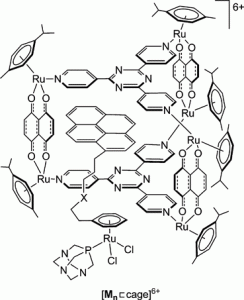This month sees the following articles in Dalton Transactions that are in the top ten most accessed:-
Recent progress in the synthesis of inorganic nanoparticles
C. N. R. Rao , H. S. S. Ramakrishna Matte , Rakesh Voggu and A. Govindaraj
Dalton Trans., 2012,41, 5089-5120 DOI: 10.1039/C2DT12266A
A novel quinoline-based two-photon fluorescent probe for detecting Cd2+ in vitro and in vivo
Yiming Li , Hanbao Chong , Xiangming Meng , Shuxin Wang , Manzhou Zhu and Qingxiang Guo
Dalton Trans., 2012,41, 6189-6194 DOI: 10.1039/C2DT30192J
Synthetic routes to [Au(NHC)(OH)] (NHC = N-heterocyclic carbene) complexes
Adrián Gómez-Suárez , Rubén S. Ramón , Alexandra M. Z. Slawin and Steven P. Nolan
Dalton Trans., 2012,41, 5461-5463 DOI: 10.1039/C2DT30294B
Structurally modified 1,10-phenanthroline based fluorophores for specific sensing of Ni2+ and Cu2+ ions
Selvam Sangeetha , Gopal Sathyaraj , Duraisamy Muthamilselvan , Vaidyanathan Ganesan Vaidyanathan and Balachandran Unni Nair
Dalton Trans., 2012,41, 5769-5773 DOI: 10.1039/C2DT30525A
Directed secondary interactions in transition metal complexes of tripodal pyrrole imine and amide ligands
John S. Hart , Gary S. Nichol and Jason B. Love
Dalton Trans., 2012,41, 5785-5788 DOI: 10.1039/C2DT30539A
Giant metal–organic frameworks with bulky scaffolds: from microporous to mesoporous functional materials
Pounraj Thanasekaran , Tzuoo-Tsair Luo , Jing-Yun Wu and Kuang-Lieh Lu
Dalton Trans., 2012,41, 5437-5453 DOI: 10.1039/C2DT12208A
Novel H2 activation by a tris[3,5-bis(trifluoromethyl)phenyl]borane frustrated Lewis pair
Thomas J. Herrington , Alex J. W. Thom , Andrew J. P. White and Andrew E. Ashley
Dalton Trans., 2012, Advance Article DOI: 10.1039/C2DT30384A
The end of iodide? Cobalt complex redox shuttles in DSSCs
Thomas W. Hamann
Dalton Trans., 2012,41, 3111-3115 DOI: 10.1039/C2DT12362B
Assembly of trinuclear and tetranuclear building units of Cu2+ towards two 1D magnetic systems: synthesis and magneto-structural correlations
Anindita Chakraborty , K. L. Gurunatha , A. Muthulakshmi , Sudipta Dutta , Swapan K. Pati and Tapas Kumar Maji
Dalton Trans., 2012,41, 5879-5888 DOI: 10.1039/C2DT12511K
A series of 3d–4f heterometallic three-dimensional coordination polymers: syntheses, structures and magnetic properties
Ming Fang , Peng-Fei Shi , Bin Zhao , Dong-Xue Jiang , Peng Cheng and Wei Shi
Dalton Trans., 2012,41, 6820-6826 DOI: 10.1039/C2DT30391D
Why not take a look at the articles today and blog your thoughts and comments below.
Fancy submitting an article to Dalton Transactions? Then why not submit to us today or alternatively email us your suggestions.











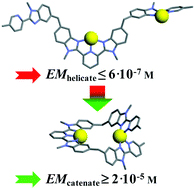
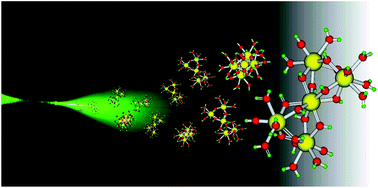
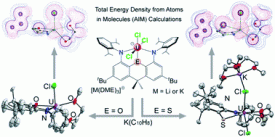

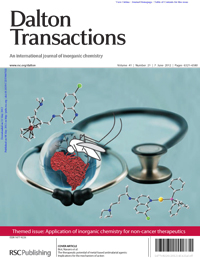
![A Sr2+ salt of [MoVI72MoV60O372(CH3COO)30(H2O)72]42− exhibits a superposed kagome-lattice with huge channels whose diameters measure approximately 3.0 nm A Sr2+ salt of [MoVI72MoV60O372(CH3COO)30(H2O)72]42− exhibits a superposed kagome-lattice with huge channels whose diameters measure approximately 3.0 nm](https://blogs.rsc.org/dt/files/2012/05/GA2.jpg)


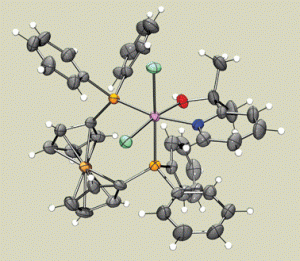 Guest Editor: Professor Bob Crabtree, Yale University
Guest Editor: Professor Bob Crabtree, Yale University
